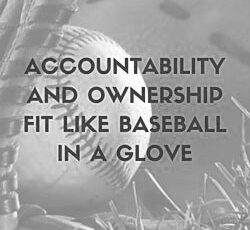 It is a challenge for organizations to drive ownership and accountability to the front lines. Every day, the tension between employees and their direct supervisors mounts because it is the employees’ sole responsibility to drive the activities that add value to the customer experience through the products and services provided. As work becomes more complex and challenging, employees need more support, training, guidance, coaching and proactive problem solving from their supervisors. However, supervisors primarily focus on the work itself. Rather than leading and guiding people, many think the way to add value is by solving unexpected problems that negatively impact work. Ultimately, supervisors believe it is their responsibility to fix problems rather than proactively managing people.
It is a challenge for organizations to drive ownership and accountability to the front lines. Every day, the tension between employees and their direct supervisors mounts because it is the employees’ sole responsibility to drive the activities that add value to the customer experience through the products and services provided. As work becomes more complex and challenging, employees need more support, training, guidance, coaching and proactive problem solving from their supervisors. However, supervisors primarily focus on the work itself. Rather than leading and guiding people, many think the way to add value is by solving unexpected problems that negatively impact work. Ultimately, supervisors believe it is their responsibility to fix problems rather than proactively managing people.
The root cause of misaligned priorities in supervision is a manifestation of management culture whereby leaders allow supervisors to drive activities rather than manage people. In many cases, the burden for results rests at the highest level. Therefore, the urgency for answers as to why results weren’t attained causes mid- and upper-level managers—albeit unintentionally—to own results and be responsible for the people. In many situations, individuals in the highest positions are solving problems that should have been addressed by employees and their respective supervisors. This type of behavior sends a wrong message to the entire organization because it implies that senior managers are best at solving problems. The levels below them are simply asked to follow directions which in many cases become activity-based.
Management culture gets formed and built into a leader’s “muscle memory” when they—with the best intentions— dip down and “help” get results over and again. Consequently, this behavior conditions the levels below them to delegate problems upward rather than own and be accountable for results.


